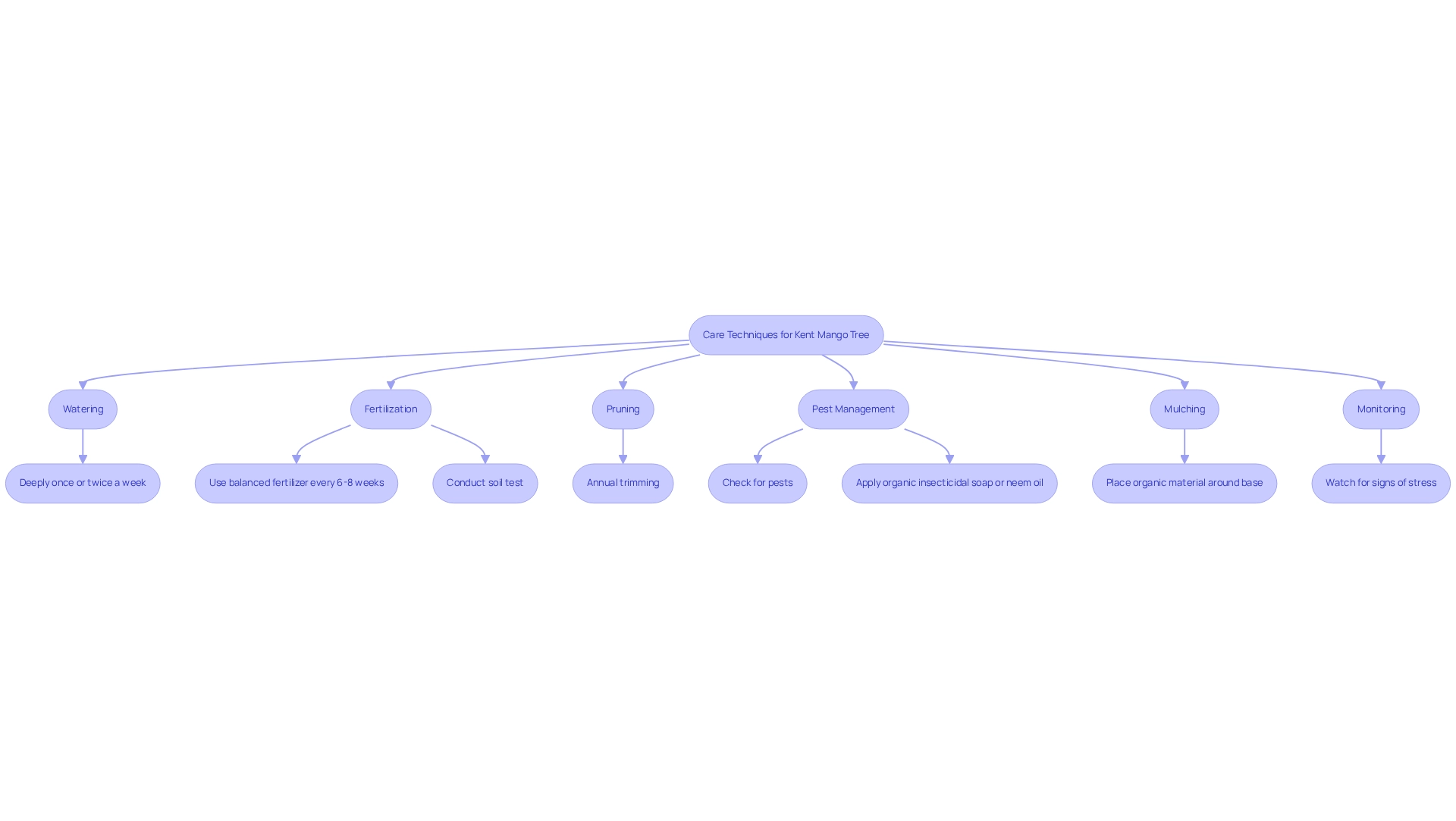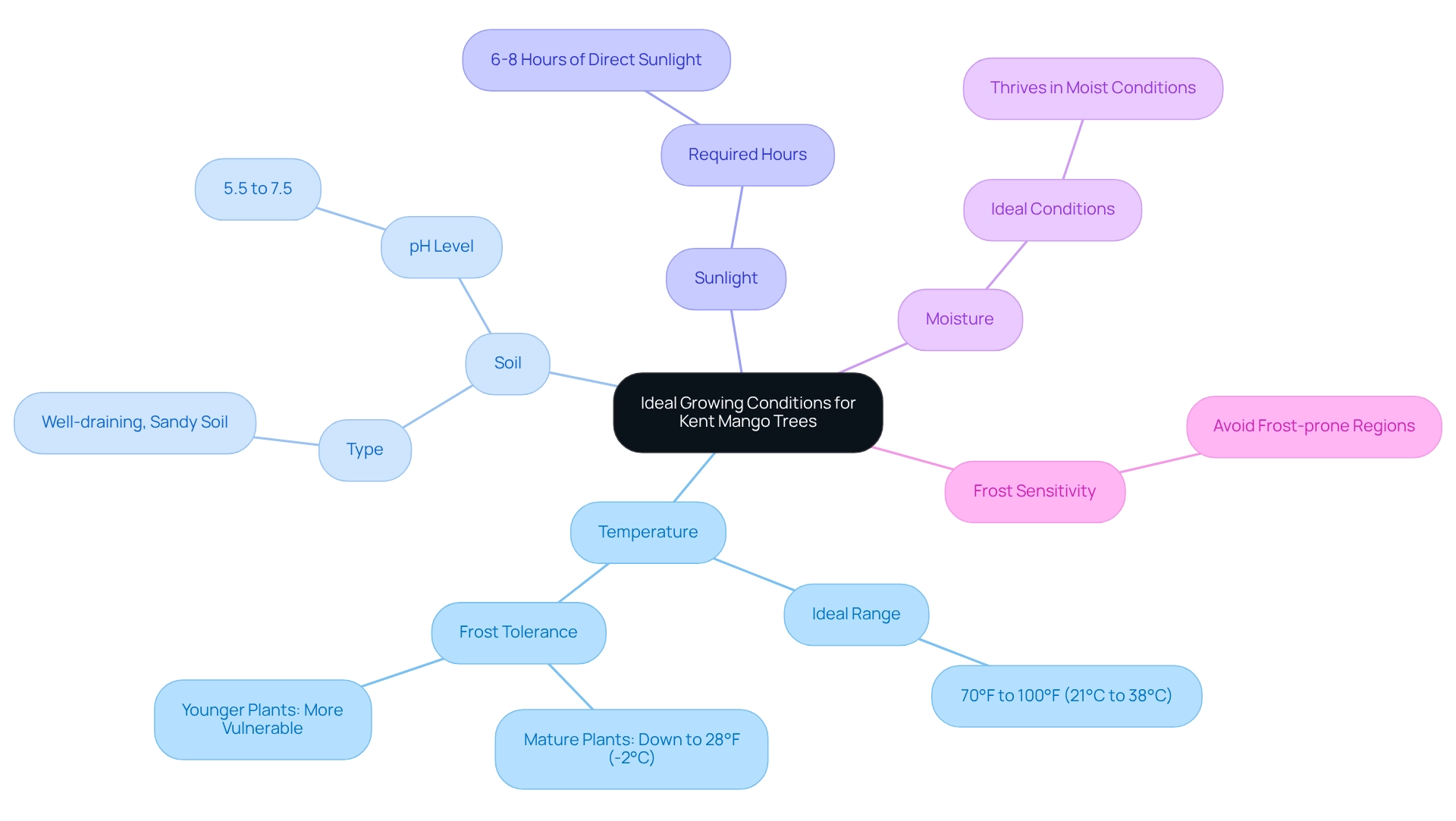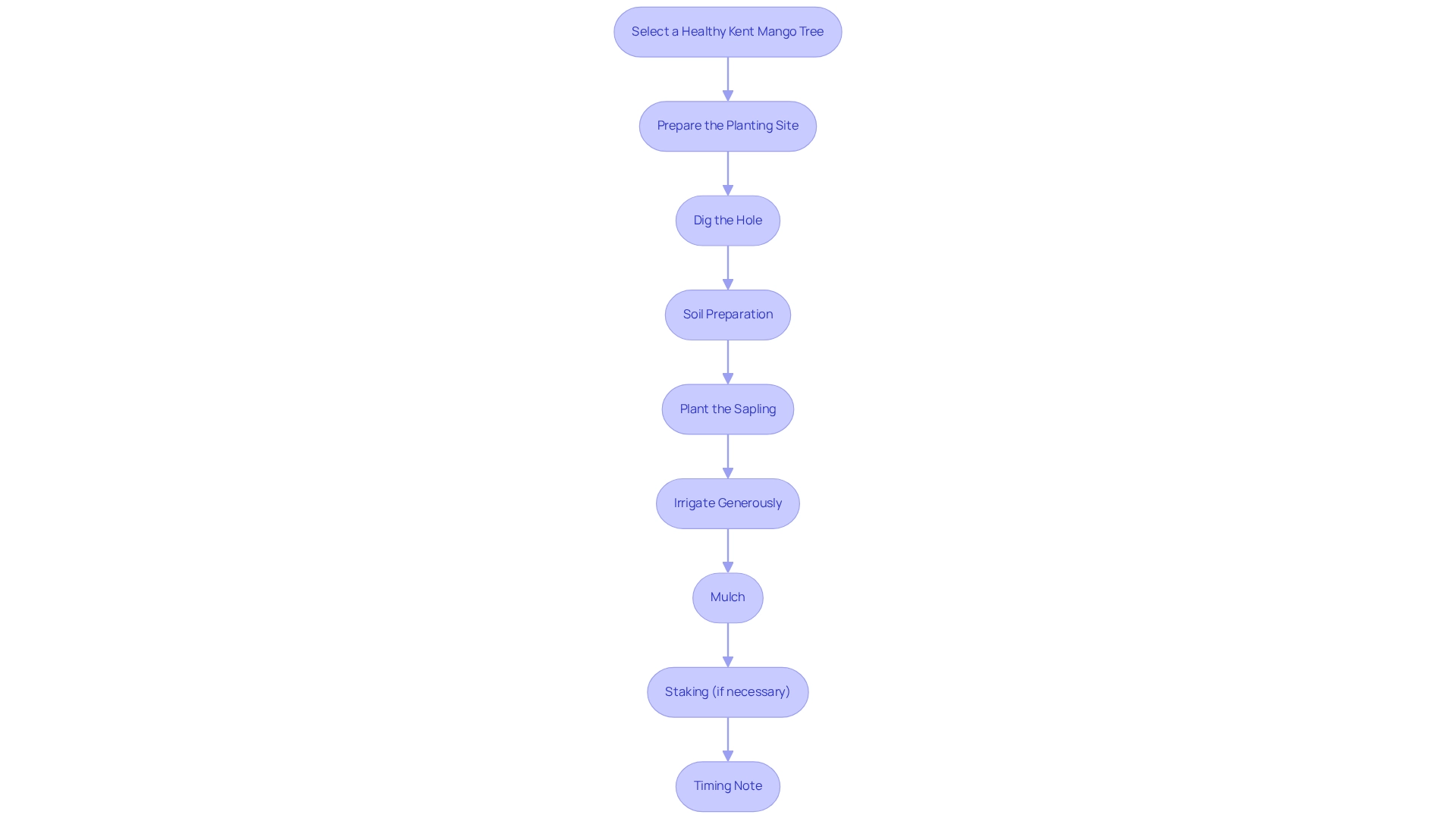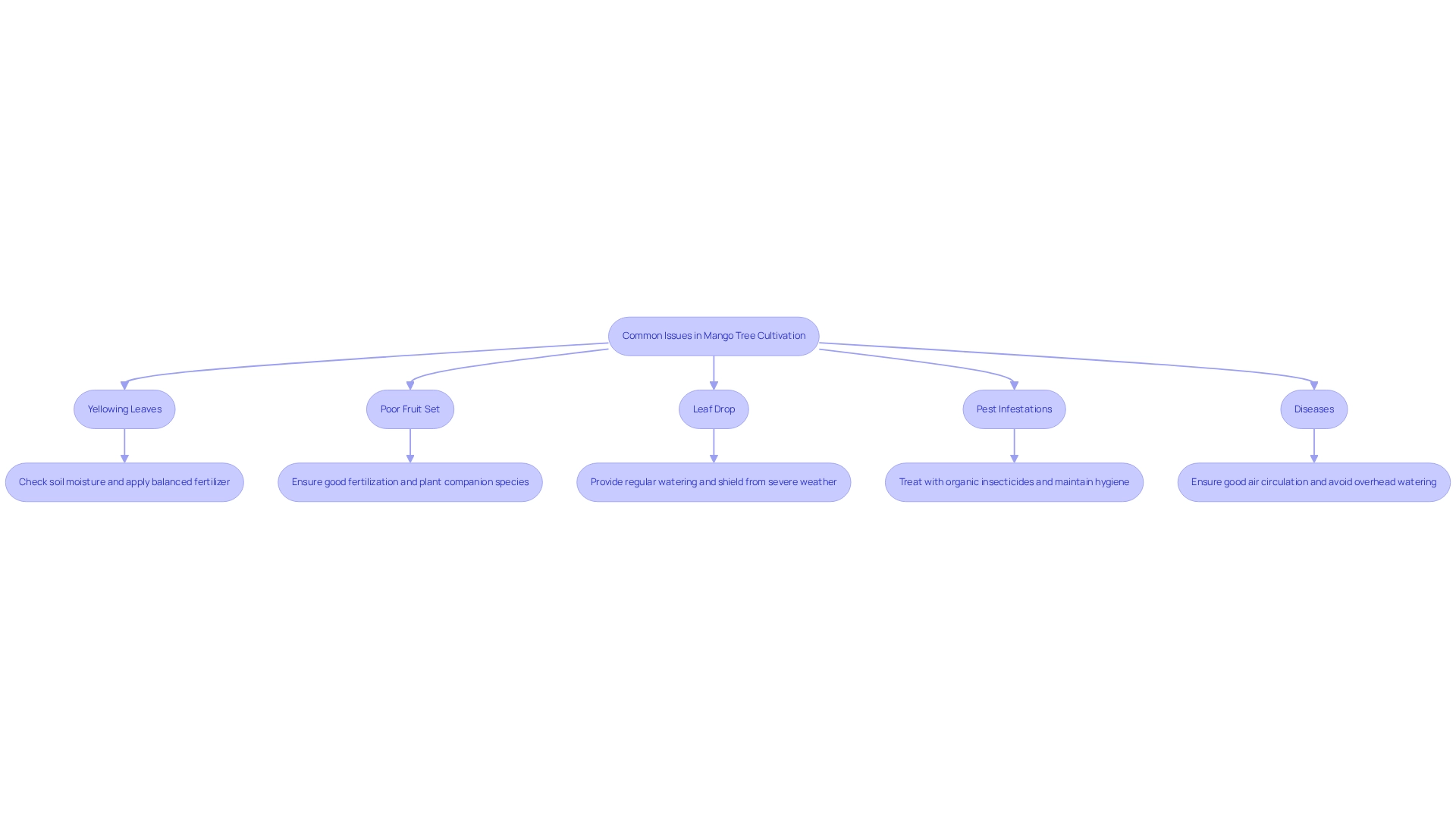Dreaming of Homegrown Mangoes? Here’s How to Plant Your Own Kent Mango Tree
There’s nothing quite like harvesting your own juicy, sun-ripened mangoes. The Kent mango tree offers a delicious way to bring tropical flavor to your backyard—as long as you know how to plant and care for it correctly. In this guide, you’ll learn step-by-step how to plant your tree, what growing conditions it needs, how to nurture it into a fruit-producing machine, and how to troubleshoot any issues along the way.
👉 Shop the Kent Mango Tree Grafted at Everglades Farm
Everglades Farm provides high-quality, grafted mango trees backed by stellar customer support and expert care.
This article serves as your comprehensive step-by-step guide to successfully planting and nurturing Kent mango trees. It begins by acknowledging the common challenges you might face in your gardening journey, ensuring you feel understood. You'll discover the ideal growing conditions and maintenance practices that can lead to thriving trees.
Selecting healthy saplings is crucial, and we’ll walk you through the process of preparing the perfect planting site. Regular care techniques such as watering, fertilization, and pest management are essential for robust growth and fruitful production. We provide specific recommendations and troubleshooting tips for common issues, ensuring you feel equipped to tackle any obstacles along the way.
As you embark on this rewarding gardening adventure, remember that every step you take brings you closer to a flourishing mango tree. Your dedication will not only yield delicious fruit but also create a beautiful addition to your garden. Let's nurture these trees together and watch them thrive!
Introduction
In the enchanting realm of tropical gardening, few fruits resonate with our imaginations quite like the Kent mango. Its sweet, juicy flesh and vibrant flavor beckon us, yet this beloved variety flourishes only under specific conditions that can truly make or break its growth. As we embark on this journey together, understanding the ideal environment—temperature, soil type, sunlight, and humidity—becomes essential for any aspiring gardener. We all face challenges in nurturing our plants, but fear not; with the right knowledge, we can overcome them.
The path from sapling to fruitful tree is a meticulous one, requiring care and attention at every phase. From planting and watering to fertilization and pest management, each step must be executed with precision. This guide will walk you through the essential techniques for nurturing Kent mango trees, troubleshooting common issues along the way. Imagine the joy of reaping the rewards of a bountiful harvest right in the comfort of your own garden. Together, let’s cultivate not just plants, but a thriving garden filled with the sweetness of success.
Understand Ideal Growing Conditions for Kent Mango Trees
The kent mango tree is a delightful choice for home gardeners, thriving in USDA Zones 9 to 11. They flourish in warm temperatures, ideally between 70°F and 100°F (21°C to 38°C). Imagine nurturing these plants in well-draining, sandy soil enriched with organic material, with a pH level between 5.5 and 7.5. To help your mango plants reach their full potential, ensure they bask in at least 6-8 hours of direct sunlight daily. Remember, inadequate light can significantly impede their growth.
These plants thrive in moist conditions, making them perfect for tropical and subtropical areas. However, it's crucial to avoid planting them in frost-prone regions. While mature Kent mango plants can withstand temperatures as low as 28°F (-2°C), younger plants are more vulnerable to cold stress. Have you noticed how drastic temperature fluctuations can disrupt the humidity balance around your plants? This can lead to stress and issues like
premature fruit drop, so maintaining stable conditions is essential for the successful cultivation of the kent mango tree, which allows you to enjoy the rewards of growing these trees and enriching your garden with vibrant life.
It's heartening to know that 79% of evaluations rate Everglades Farm's service as five stars. This reflects the quality of the nursery from which these rapidly growing plants are sourced. For gardeners like you, aiming to cultivate your own tropical produce, Everglades Farm stands out as a top choice for exceptional customer service and high-yield tropical trees. Let's embark on this gardening journey together, nurturing our plants and watching them flourish!
Follow Step-by-Step Instructions for Planting Your Kent Mango Tree
-
Select a healthy Kent mango tree: When choosing a Kent mango tree, it's essential to select one from a reputable nursery, ensuring it is healthy and free from pests. A robust sapling is crucial for successful growth and fruit production, which can occur within four years when sourced from a nursery.
-
Prepare the Planting Site: Find a sunny spot with well-draining soil. Clear away any weeds and debris to create the perfect environment for your fruit plant. While soursop plants thrive in similar conditions, it's important to focus on the specific needs of your mango plant.
-
Dig the Hole: Create a hole that is twice as wide and the same depth as the root ball of the sapling. This allows for adequate root development, which is vital for the plant's stability and growth.
-
Soil Preparation: Mix the excavated soil with organic compost to boost nutrient content. This provides the essential nutrients your Kent mango tree requires for early growth. Incorporating organic matter is a best practice for various tropical fruit trees, including mangoes.
-
Plant the Sapling: Place the sapling in the center of the hole, ensuring that the top of the root ball is level with the surrounding ground. Gently backfill the hole with the earth mixture, tamping it down lightly to eliminate air pockets that could hinder root growth.
-
Irrigate Generously: Water the newly planted sapling deeply to help compact the soil around the roots. This initial watering is crucial for establishing a strong foundation.
-
Mulch: Apply a layer of organic mulch around the base of the plant, keeping it a few inches away from the trunk. This practice retains moisture, suppresses weeds, and cools the soil, all of which contribute to the plant's health. Similar mulching techniques are recommended for soursop trees.
-
Staking (if necessary): If your sapling is tall or situated in a windy area, consider staking it to provide support until it establishes a strong root system. This precaution will help prevent damage during its initial growth phases.
-
Timing Note: It’s best to plant these saplings in late winter or early spring to ensure optimal growth conditions.
-
Potential Challenges: Be aware that these plants can face challenges from issues like powdery mildew, which may resemble someone dusting baby powder on the leaves. To manage this, apply neem or horticultural oil at the first sign of powdery mildew and ensure proper air circulation around the plant. Similar pest control methods can be used for other tropical produce plants, promoting a flourishing garden.
By following these guidelines, you can ensure a successful planting experience for your Kent mango tree, laying the groundwork for a bountiful yield in the future.
Implement Care Techniques for Healthy Growth and Fruit Production
To nurture your Kent mango tree, water it deeply once or twice a week, making sure the top inch of soil dries out between waterings. This frequency may need to be adjusted based on rainfall and temperature conditions. Remember, regular watering is essential for healthy growth; optimal moisture levels can prevent stress and encourage strong crop production.
Fertilization: Start a fertilization program with a balanced fertilizer designed for fruit plants every 6-8 weeks during the growing season. Conducting a soil test is crucial to determine specific nutrient needs. Proper fertilization based on these results not only leads to healthier plants but also protects our precious water resources from pollution. As the seasons change, consider decreasing feeding during the autumn and winter months to align with the plant's natural growth cycle. For effective results, applying 3.33 pounds of a 15% nitrogen product will provide approximately half a pound of nitrogen, supporting healthy growth without over-fertilizing. This careful control of nitrogen levels is vital; too much nitrogen can lead to vigorous growth at the expense of yield, as seen in case studies on grapevines.
Pruning: Remember to conduct
annual trimming to remove dead or diseased branches and to shape the plant, which enhances air circulation and sunlight penetration. C.E. Swift, a former area Extension agent, notes that each year of growth can be identified by the ring of bud scale scars left when the bud at the tip of the shoot grows. This practice not only encourages healthy growth of the Kent mango tree but also optimizes the fruit production of the Kent mango tree by allowing better access to light.
Pest Management: Regularly check your plant for common pests like mealybugs and spider mites. If you notice any infestations, don't hesitate to use organic insecticidal soap or neem oil to control them efficiently, ensuring your plant remains healthy and productive.
Mulching: Consider placing a layer of organic material around the base of your plant to retain moisture, suppress weeds, and regulate ground temperature. This practice is essential for maintaining consistent soil conditions, which are vital for your plant's health.
Monitoring: Keep a vigilant eye on your plant's overall health, watching for signs of stress such as yellowing leaves or stunted growth. These symptoms may indicate nutrient shortages or water-related issues, requiring immediate attention to restore your plant's vitality.
At Everglades Farm, our commitment to quality products and excellent customer service ensures that you have the resources you need for successful cultivation of the Kent mango tree.
 Troubleshoot Common Issues in Mango Tree Cultivation
Troubleshoot Common Issues in Mango Tree Cultivation
-
Yellowing Leaves: If you're noticing yellowing leaves, it may be a sign of overwatering or nutrient deficiencies. Take a moment to check the soil moisture. If it feels too dry, consider applying a balanced fertilizer to help your plant thrive. Remember, you're not alone in this; many gardeners face similar challenges.
-
Poor Fruit Set: Are you experiencing poor fruit production? This can often stem from insufficient pollination or nutrient deficiencies. To improve your chances, ensure your plant is well-fertilized. You might also think about planting companion species that attract pollinators. Together, we can create a flourishing garden!
-
Leaf Drop: Leaf drop can be concerning, and it often occurs due to environmental stress, such as sudden temperature changes or drought. Make sure to provide regular watering and consider shielding your plant from severe weather. Your attention to these details can make a real difference.
-
Pest Infestations: It's essential to regularly check for pests in your garden. If you spot any, treat them with organic insecticides and maintain good garden hygiene to prevent future infestations. Remember, a little vigilance goes a long way in keeping your garden healthy and vibrant.
-
Diseases: Diseases such as powdery mildew can affect the kent mango tree, but there are steps you can take to protect them. Ensure good air circulation and avoid overhead watering to minimize humidity around the leaves. If needed, consider applying fungicides as a preventive measure. You're doing great by being proactive about your plant's health!
🌱 Need tips for dwarf mango care? Read this guide
Conclusion
Cultivating Kent mango trees is not just a gardening task; it's an exciting and rewarding journey that can bring immense joy to any gardener. By understanding the specific growing conditions—such as warm temperatures, well-draining soil, and ample sunlight—you can create the perfect environment for these tropical beauties to thrive. Imagine selecting a healthy sapling and meticulously preparing your planting site, setting the stage for fruitful growth.
As you implement proper care techniques, including consistent watering, appropriate fertilization, and regular pruning, you'll find that your mango tree can flourish in your garden. Staying vigilant about potential issues like yellowing leaves or pest infestations will empower you to intervene promptly, safeguarding the vitality of your beloved tree.
Ultimately, growing Kent mango trees enriches not only your personal garden but also your life, as you experience the joy of harvesting sweet, juicy fruits. With dedication and the right knowledge, you can transform your gardening space into a tropical paradise, filled with the luscious flavors of homegrown mangoes. Embracing these nurturing practices paves the way for a thriving garden that celebrates the beauty and bounty of nature, inviting you to savor every moment of this rewarding endeavor.
Ready to Grow Your Kent Mango Tree?
Planting and nurturing your own Kent mango tree is a rewarding experience that delivers sweet, tropical results. With the right conditions, regular care, and expert tips, your backyard can become a mango paradise.
👉 Order your Kent Mango Tree from Everglades Farm and start growing today!

Frequently Asked Questions
What are the ideal growing conditions for the Kent mango tree?
The Kent mango tree thrives in USDA Zones 9 to 11, preferring warm temperatures between 70°F and 100°F (21°C to 38°C). They require well-draining, sandy soil enriched with organic material and a pH level between 5.5 and 7.5.
How much sunlight do Kent mango trees need?
Kent mango trees need at least 6-8 hours of direct sunlight daily to reach their full potential. Inadequate light can significantly impede their growth.
Can Kent mango trees tolerate cold temperatures?
Mature Kent mango plants can withstand temperatures as low as 28°F (-2°C), but younger plants are more vulnerable to cold stress. It's essential to avoid planting them in frost-prone regions.
What humidity conditions do Kent mango trees prefer?
Kent mango trees thrive in moist conditions, making them suitable for tropical and subtropical areas. Maintaining stable humidity is crucial to prevent stress and issues like premature fruit drop.
Where can I source Kent mango trees?
Everglades Farm is a recommended nursery for sourcing Kent mango trees, with 79% of evaluations rating their service as five stars, reflecting their quality and exceptional customer service.



 Troubleshoot Common Issues in Mango Tree Cultivation
Troubleshoot Common Issues in Mango Tree Cultivation
 😟 Not seeing fruit? Here's why your mango tree may not be fruiting
😟 Not seeing fruit? Here's why your mango tree may not be fruiting

